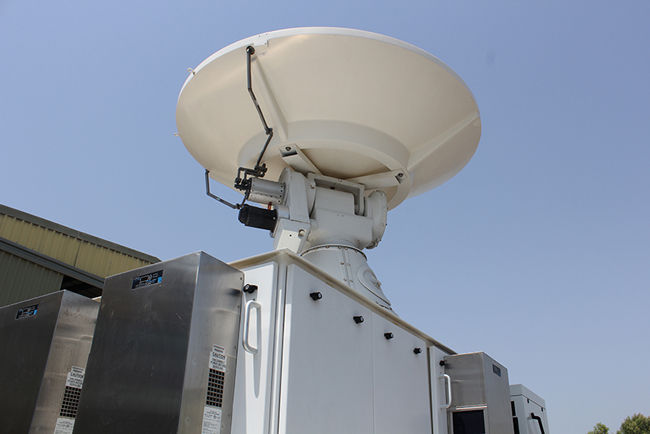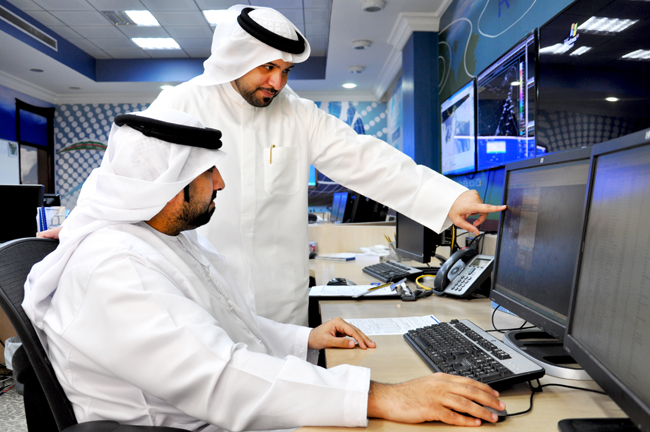UAE's Rain Enhancement Program Addresses Key Technical Challenges
By Omar Al Yazeedi, Director of Research and Development and Training at the National Centre for Meteorology and Seismology (NCMS)
A delegation of prominent United Arab Emirates government and private sector representatives organized by Masdar, Abu Dhabi’s renewable energy company, attended the 7th World Water Forum in Daegu and Gyeongbuk, Republic of Korea, from April 12 to 17. The delegation showcased the country’s adoption of innovative technologies, including rain enhancement, as a means to ensure a water secure future.
According to the UN, almost half of the world’s population could be faced with high water stress by 2030. Much of the projected total global population increase of three billion over the next three decades will occur in developing countries, putting severe pressure on already limited supplies of potable water. In the Middle East and North Africa, the need to boost desalinated water production to make up the shortfall from depleted groundwater stocks is imposing further energy costs that are straining national budgets.
As a consequence, some regional governments are looking at rain enhancement as an underexplored option for arid and semi-arid countries to strengthen their water sustainability. Earlier this year, the Ministry for Presidential Affairs of the United Arab Emirates (UAE) launched the UAE Research Program for Rain Enhancement Science with the aim of stimulating research in this field. Overseen by the National Centre of Meteorology and Seismology (NCMS), the Program offers a grant of US $5 million dollars over a three-year period to be shared by up to five winning research proposals from a two-stage merit review competition.
The Program’s objectives are the development of techniques to improve the efficiency and predictive capabilities of targeted cloud seeding operations. For UAE scientists working on current rain augmentation operations, the three key technical challenges are the collation and analysis of data on the specific cloud formations found in the UAE, the selection and deployment of seeding materials used, and identifying and tracking suitable clouds.

A mobile radar truck scans the atmosphere.
According to Omar Al Yazeedi, Director of Research and Development and Training at the National Centre for Meteorology and Seismology (NCMS), “our operations focus on cumulus clouds, which are the most common rain-bearing clouds in the UAE. Naturally, there are different properties for each cloud. Based on our previous seeding operations, we estimate that cloud seeding operations can enhance rainfall by as much as 30 to 35 percent in a clear atmosphere, and by up to 10 to 15 percent in a turbid atmosphere. Nevertheless, we are restricted at present in terms of assessing each cloud seeding operation; we urgently need to develop new techniques for measurement of precipitation enhancement.”
Regarding the potential environmental impact of the various seeding agents available, Dr. Sofian Farrah, Senior Forecaster and Meteorological Specialist at the NCMS, assured us that the materials used in the UAE were no more toxic than common table salt: “We have found that hydroscopic materials are the best option for warm, convective clouds. Silver iodine, on the other hand, is more appropriate for use in colder climates.”
Dr. Farrah explained that “the cloud formations we target accumulate in the mountainous area in the North East of the UAE during the summer months. When a suitable cloud is identified, the seeding materials are dispersed at the base of the clouds so that they can be carried up by updrafts. Once a seeding flare is ignited, it takes 2 to 3 minutes for the material to be ejected and up to 15 minutes for the material to interact with the cloud molecules. This process involves collision followed by coalescence: the materials are designed to promote the clustering of droplets originally measuring 0.3 to 0.4 micrometers. As our previous experiments yielded promising results, we are promoting new research to investigate seeding materials and how these can be more effectively deployed.”
Al Yazeedi said that: “The problem we have is identifying and tracking the right kind of clouds. Although we have more than 60 dedicated weather stations in the UAE, this is still an insufficient monitoring density for our requirements. We have witnessed incidents of heavy rainfall in the UAE that we were not adequately analyzed because we could not gather adequate data from our network of stations.”

Data collection and interpretation is essential to the success of rain enhancement.
Through innovation designed to address these challenges, rain enhancement is likely to become an increasingly important part of national water management strategies in regions such as the Arabian Gulf. However, the realization of this objective cannot be left to governments alone. To this end, public authorities need to encourage innovators and entrepreneurs to cooperate to push the frontiers of research and development and ensure that rain enhancement contributes to a more complete portfolio for water security.
To this end, initiatives such as the UAE Research Program for Rain Enhancement Science can provide a platform for innovation to help drive the fulfillment of the policy goals set by governments and international organizations. The project also serves the broader goal of building knowledge-based regional economies and maximizing the potential of the region’s human capital.
Although the immediate aim of this initiative is to increase the UAE’s rainfall and enhance freshwater supply, an additional objective is to generate results that could have wider applications for countries that might benefit from advances in rain augmentation technology. Stressing the strategic importance of the UAE’s drive to innovate new technologies for water sustainability, Al Yazeedi stressed that “We welcome applications from international and local, public and private, profit and non-profit organizations, and also individuals.”
With water sustainability becoming a key strategic challenge as local populations increase, technological advances could offer the prospect of using rain enhancement as an important supplement to existing sources of groundwater and desalinated water. The UAE is among the national governments leading the way in meeting the key technical challenges head on.
